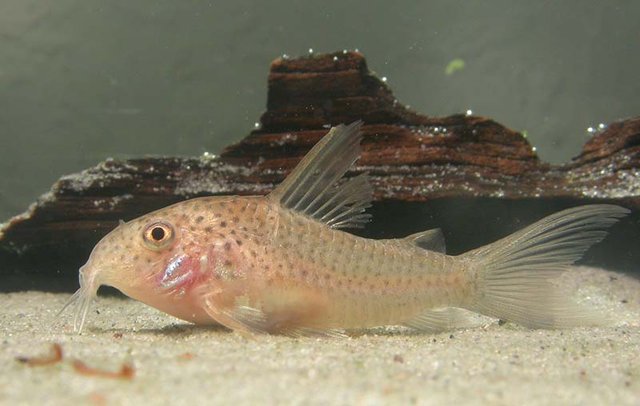The Perfect Addition to Your Freshwater Aquarium

Corydoras catfish are a fascinating group of freshwater, bottom-dwelling fish that are known for their unique traits and compatibility with a variety of tank mates. They are social creatures that prefer to live in groups of at least six individuals . In this article, we will explore the best substrate for Corydoras catfish.
According to Heiko Bleher, a renowned ichthyologist, fine silica sand is the best substrate for Corydoras catfish . Corydoras have evolved a specialized head and snout structure adapted for feeding in a fine substrate, usually sand, in search of micro-organisms and also to keep their snout and barbels free of infections and parasites . Sharp or rough substrate can damage their delicate barbels, so opt for fine-grained sand or smooth, small-sized gravel .
Sand is soft and allows Corydoras to easily dig into it in search of food. They are bottom dwellers that spend most of their time scavenging on the bottom for food . A minimum tank size of 20 gallons is recommended for a small group of Corydoras . Additionally, provide plenty of hiding spots using plants, driftwood, or caves to mimic their natural habitat .
Corydoras catfish are social creatures that thrive in groups. They are peaceful and non-aggressive fish that can be kept with other peaceful species such as tetras, guppies, and rasboras . However, avoid keeping them with larger or more aggressive fish as they may become stressed or injured.
Corydoras catfish are also known for their unique traits. They have a specialized respiratory system that allows them to breathe air from the surface of the water using a modified swim bladder . This adaptation allows them to survive in poorly oxygenated waters and is one reason why they are so popular among aquarium enthusiasts.
In addition to providing fine silica sand as the substrate, it’s important to maintain good water quality in your aquarium. Corydoras catfish are sensitive to poor water conditions and require regular water changes to keep them healthy. Use a high-quality filter and perform weekly water changes of 25% to 50% of the total volume of your aquarium .
When it comes to feeding Corydoras catfish, they are omnivorous and will eat almost anything that fits into their mouths. However, it’s important to provide them with a balanced diet that includes both plant-based and protein-rich foods. You can feed them high-quality flakes or pellets supplemented with live or frozen foods such as bloodworms, brine shrimp, or daphnia .
Corydoras catfish come in many different species and colors. Some popular species include Corydoras paleatus, Corydoras sterbai, Corydoras panda, and Corydoras julii. Each species has its own unique characteristics and requirements. For example, Corydoras sterbai prefers cooler water temperatures than other species .
If you’re looking to add some color to your aquarium, consider adding some live plants. Not only do they add aesthetic value but they also help maintain good water quality by absorbing excess nutrients from the water column . Some popular plant species include Java ferns, Anubias nana, Amazon swords, and Cryptocoryne wendtii.
In conclusion, if you want to keep your Corydoras catfish healthy and happy, it’s essential to provide them with a suitable tank environment. Opt for fine silica sand as the substrate to allow them to behave naturally without damage to their barbels . Provide plenty of hiding spots using plants, driftwood, or caves to mimic their natural habitat. Keep them in groups of at least six individuals and avoid keeping them with larger or more aggressive fish. Finally, maintain good water quality by using a high-quality filter and performing regular water changes.